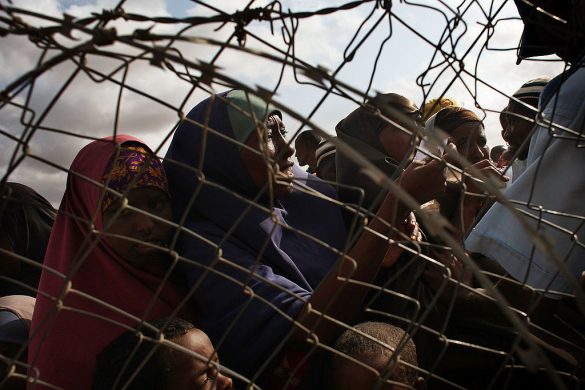GENEVA, 16 September, 2016 (IFRC): Uganda Red Cross Society deployed the first Red Cross unmanned aerial vehicle – a drone – in Africa to monitor the situation at a vast refugee camp on the border with South Sudan. The drone footage from northern Uganda revealed that a swathe of countryside is becoming home for the hundreds of people crossing the border each day. On 8 September, the day the drone took to the air, 4,373 new refugees crossed into Uganda, according to the most recent update from the UN High Commissioner for Refugees (UNHCR).
The Bidibidi reception centre in Yumbe district, where many refugees are being initially registered, is 300 kilometres north of Kampala, but is within walking distance of the border with South Sudan, where fighting has erupted. Red Cross volunteers and staff are providing aid and care to the refugees passing through the reception centre.
According to the Red Cross, 57,900 people have passed through the Bidibidi centre – just over a month after it opened. The reception centre is expected to be over its capacity of 100,000 people within the next month.
Nearly 130,000 South Sudanese refugees have arrived since 1 July, bringing the total number in Uganda to nearly 360,000 (Source: UNHCR).
‘A decent life’
On 29 August the International Federation of Red Cross and Red Crescent Societies (IFRC) launched an emergency appeal for 700,000 US dollars to support the Uganda Red Cross Society’s efforts to assist 40,000 refugees for six months with safe water, sanitation, hygiene promotion, emergency shelter, and health care.
“The vast majority of people crossing into Uganda from South Sudan are women and children or people with special needs, such as the elderly and those with complex health issues,” said Andreas Sandin, IFRC operations coordinator for East Africa. “Having travelled more than 400 kilometres from Juba, they arrive exhausted, hungry, and in need of shelter. With more families arriving daily, we need to ramp up our activities quickly.”
Gracious Kyagaba, Water and Sanitation Coordinator at the Uganda Red Cross Society, said: “The appeal launched by the IFRC will support us to address issues related to inadequate supply of water and limited access to health facilities, as well as curb outbreaks of diarrhoeal diseases.
“We will also support refugees to set up shelters so that they are able to live as decently as possible.”
Red Cross volunteers are assisting with the registration of new arrivals, who come in on UNHCR buses and then disperse into the surrounding countryside.
Emergency operation
Volunteers are also operating a treatment plant to produce safe drinking-water, and working to raise awareness of hygiene and sanitation – crucial in maintaining good health for the refugees.
The drone used by the society to document its work in Bidibidi was supplied by the Red Cross Red Crescent Climate Centre as part of its forecast-based financing programme for large-scale climate-related disasters in Africa supported by the government of Germany and the German Red Cross.
Following its successful first flight, the device may now be deployed from its base in Kampala elsewhere in Africa on forecast-based financing assignments and climate-related emergencies.
The first forecast-based financing response to a disaster was triggered in Uganda last November when Red Cross volunteers distributed 5,000 relief items to flood insecure communities in Kapelebyong after forecasts of rising water-levels reached a predetermined risk threshold.















